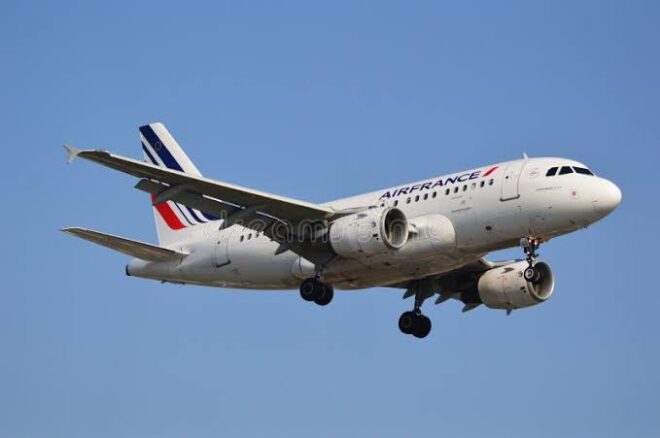
Air France Passenger Outraged After Being Seated Behind a Corpse Mid-Flight
In an astonishing and deeply unsettling mid-air incident, a passenger aboard an Air France flight was left outraged after being forced to sit directly behind a deceased traveler for several hours. The shocking event unfolded on a long-haul flight, leaving fellow passengers in disbelief and sparking debates about airline protocols regarding medical emergencies and passenger welfare.
A Nightmare at 30,000 Feet
The ordeal began on an Air France flight traveling from an undisclosed location to Paris. According to reports, a male passenger, who appeared to be in distress, lost consciousness shortly after takeoff. Despite efforts by flight attendants and onboard medical professionals to resuscitate him, he was declared dead mid-flight. However, what followed next was an unexpected nightmare for those seated nearby.
One of the passengers, who was seated directly behind the deceased individual, took to social media to share her distressing experience. She claimed that instead of being relocated, she and others were forced to sit behind the lifeless body for the remainder of the flight. The woman, clearly shaken, described the experience as “traumatizing” and expressed anger over the airline’s handling of the situation.
Airline Protocols and Passenger Complaints
Airline policies regarding onboard deaths vary, but most carriers follow specific guidelines when dealing with such emergencies. Typically, if a passenger passes away mid-flight, the crew attempts to move the body to an area that causes minimal disruption to others. If a first-class or business-class section has available space, the deceased may be moved there and covered discreetly. In cases where no such space is available, the body remains in the assigned seat, often covered with a blanket.
The affected passenger, however, stated that the airline’s approach was inconsiderate and lacked empathy. “It was beyond disturbing to sit there for hours, knowing a deceased person was right in front of me. The airline should have made arrangements to move us, at the very least,” she expressed.
Other passengers on board also reported feeling uncomfortable, with some questioning whether alternative measures could have been taken. Some suggested that the airline should have reserved a designated space for such emergencies, while others called for improved crisis management training for flight crews.
The Airline’s Response
Air France issued an official statement following the incident, expressing their condolences to the family of the deceased passenger. They explained that their crew followed standard aviation procedures when handling onboard fatalities and emphasized that passenger safety and well-being remain their top priority.
However, the airline stopped short of apologizing directly to the passengers affected by the situation. Instead, they reiterated their commitment to reviewing protocols to ensure better management of such incidents in the future.
Aviation Experts Weigh In
Aviation experts have weighed in on the controversy, explaining that dealing with in-flight deaths is an unfortunate but inevitable reality for airlines operating long-haul routes. According to industry analysts, flights covering long distances—such as transatlantic or transpacific routes—are more likely to encounter medical emergencies due to factors like deep vein thrombosis, pre-existing health conditions, and high altitudes affecting vulnerable passengers.
“A flight crew is trained to handle medical emergencies, but there are limitations to what they can do at 30,000 feet. In the event of a passenger’s death, they have to work with the available resources, including limited space and the safety of others,” said one aviation consultant.
A Call for Change?
While this incident has stirred outrage, it has also reignited discussions about how airlines handle medical emergencies and deaths onboard. Many passengers are now demanding clearer guidelines, improved crisis response strategies, and enhanced communication between airline staff and those directly affected by such situations.
Some industry professionals have suggested that airlines should designate a specific area on long-haul flights where deceased passengers can be placed discreetly. Others argue for improved medical screening of travelers before boarding, particularly on long flights, to minimize such occurrences.
Conclusion
The distressing experience of the Air France passenger has shed light on an issue that, while rare, is a harsh reality of air travel. While airlines follow established protocols, the emotional and psychological impact on surviving passengers must also be considered. This incident serves as a wake-up call for the aviation industry to reassess its approach to handling in-flight deaths, ensuring that passengers are treated with dignity and compassion—even in the most challenging circumstances.
As air travel continues to evolve, perhaps it is time for airlines worldwide to revisit their policies, prioritizing not just protocol adherence but also the humane treatment of all those onboard.